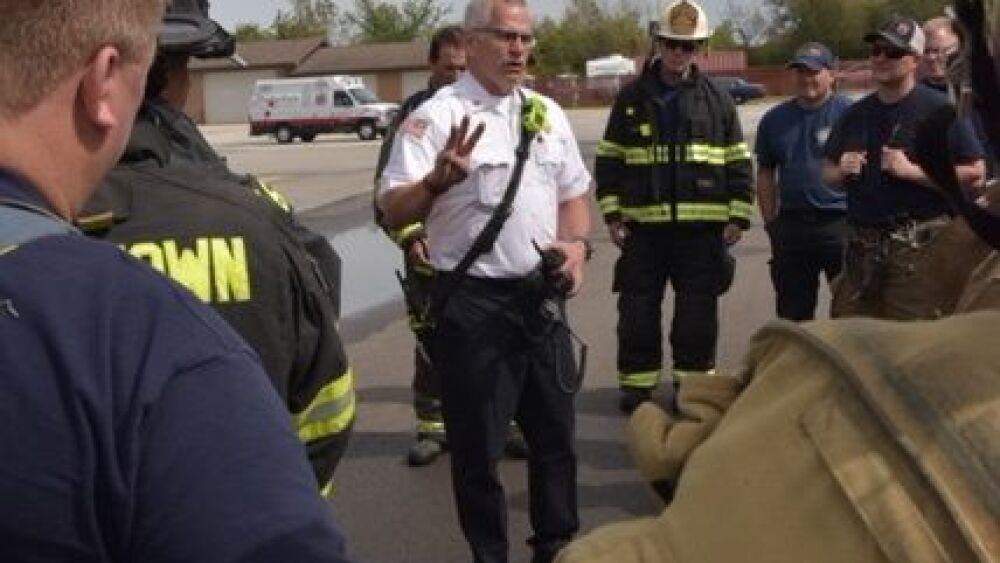By Blaise Bojo
As all firefighters should know – but not all citizens realize – most rural communities lack some public safety services, such as a full-time office of emergency management/homeland security, hazmat response teams, technical rescue response teams, and other services. In these communities, the volunteer fire service fills that void. As firefighters and fire officers in these communities, we must ask ourselves, “Are we ready for the next challenge?”
One of the problems with relying on the volunteer fire service for countless all-hazards response efforts is the simple fact that the number of volunteer firefighters is dwindling at an alarming rate. This leaves the growing number of unique and sometimes complex calls to be handled with limited staffing. Further, the increasing demand for unique services requires an increased amount of training for volunteers to be able to respond adequately to these incidents.
Capitalize on skill sets
One thing that I believe helps with our ability to respond to these incidents is the skills that volunteer firefighters bring to the table from their full-time or “other” occupations – mechanics, arborists, loggers, farmers, quarrymen, administrative workers, electricians, construction workers, and so much more. They likely also have hobbies that require skills that could be useful in a variety of incidents. If we connect and maximize our respondents’ unique skills and experiences from outside their traditional fire service skills, we can be incredibly effective.
Where to begin? First, explore your membership. Officers should always sit down and talk with new members to get to know them. Find out what they do for a living. Their skills from their everyday job or hobbies may be useful in response to a wide variety of incidents. Some examples:
- Mechanics: They have advanced knowledge of power tool use. They also have advanced knowledge of vehicle and machinery anatomy, and the easiest way to get those things cut apart in a timely fashion.
- Arborists: They have the skills necessary to ascend and descend a tree better than anyone. This can be a great asset for scenarios where an aerial device can’t provide the access you need.
- Farmers: They will have knowledge related to agriculture fire/rescue incidents, like those involving grain bins or other machinery.
Maximize your preparation
Now that you’ve discovered the unique skill sets among your members, it’s time to maximize the department’s effectiveness, even with limited staffing.
Following are some recommendations for how staffing-challenged rural fire departments can best serve communities:
- Ensure there are standard operating guidelines in place for the types of incidents to which you may be called upon to respond.
- Conduct a community risk assessment in order to determine the types of emergencies most likely to occur in your community, then tailor your training and response preplanning around these response types.
- Train for what has happened in your jurisdiction in the past as well as for those incidents that have the potential to happen. After all, without training and preparedness, we are just normal people with specialized equipment.
- Dig into your members’ talents, maximizing their skill sets, as noted above.
- Establish preplanned/automatic mutual-aid agreements with neighboring fire departments for unique incidents that may be staffing-intensive.
- Elevate training for rural fire officers to include emergency management. Officers should have advanced training in emergency management and the incident command system. A good sequence of training courses is FEMA’s Professional Development Series as well as ICS-300 (Intermediate Incident Command System for Expanding Incidents) and ICS-400 (Advanced Incident Command System for Complex Incidents).
- Maintain a good working relationship with other agencies. Your fire department should have a good working relationship with other local agencies, including transportation/highways, police department, regional emergency management, EMS and healthcare agencies. Incorporate these agencies into your drills for unique incidents and ask them to incorporate you into theirs.
Being prepared for these types of incidents, big or small, allows our rural communities to be as safe as possible.
Critical questions
Our communities deserve to have these services available, and it is our duty to provide them. We stand ready to help our community with whatever is needed, come hell or high water. When our citizens are in trouble, they call us – and we should be proud of that. But we must also consider what level of service we can provide.
Some questions that we need to ask ourselves:
- Is this increasing demand for services affecting our already dwindling number of volunteer firefighters?
- How can we provide an increased number of services on an already strained budget?
- Does the strained budget mean that on top of asking our volunteers to respond to calls for service, we must ask them to fundraise more to provide themselves with the equipment needed to do the job?
- How do we ask our volunteers to attend increasing training sessions to face the increasing demand for different services?
While the answers to these questions will differ based on your unique needs and department resources, I do know that, no matter what, the volunteer firefighters in our rural communities will do whatever is needed, whenever it is needed.
About the Author
Blaise Bojo has been involved with the fire service since 2012. He currently serves as the fire chief for Hancock, N.Y. as well as the chairman of the Delaware County Technical Rescue Team and vice-chair of the Hancock Area Emergency Preparedness Committee. Bojo holds certifications in Firefighting, Rope Rescue, Water Rescue, Wildland Search and Rescue, Hazardous Materials Response, ICS-300 and ICS-400. He is EMT and has received certification from FEMA’s Professional Development Series in Emergency Management. Bojo can be reached via email.












